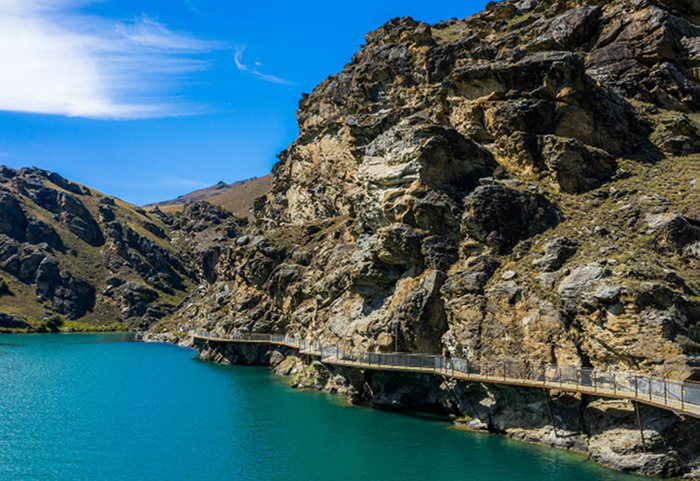Kōrero Māori – Give te reo a go
Mary Hinsen
09 May 2021, 9:07 PM
 Join us in our Māori language journey through our Monday te reo Māori series.
Join us in our Māori language journey through our Monday te reo Māori series.Tēnā koutou - hello everyone.
How are you going in your te reo journey? It’s great to hear people giving te reo a go with me.
This week, I thought I’d talk about Te Wairere Lake Dunstan, as the long-anticipated Lake Dunstan Trail is now open.
Before Lake Dunstan was created, the Mata-Au ran swiftly through the gorge and the infamous Cromwell Gap swirled below the bridge. The name given to the lake “Te Wairere” refers to the speed with which the river once ran at this point.
The whole of the Mata-au Clutha River was part of a mahinga kai trail that led inland and was used by Otago hapū including Kāti Kurī, Ngāti Ruahikihiki, Ngāti Huirapa and Ngāi Tuahuriri.
The river was used as a main highway inland, and provided many resources to sustain those early travellers on their journey.
The river was a significant indigenous fishery, providing tuna (eels), kanakana (lamprey) and kōkopu in the area over which Te Wairere now lies. Manu (birds), including moa, were taken from areas along the river, which the lake now covers.
The tūpuna had considerable knowledge of whakapapa, traditional trails and tauranga waka (landing places), places for gathering kai and other taonga.
They knew the ways to use the resources the river provided, and tikanga for the proper and sustainable ways to use those resources. All of these values remain important to Ngāi Tahu today.
The waterway was also very important in the transportation of pounamu from inland areas down to settlements on the coast, where it was able to be traded. Because of its location at the confluence of Mata-au and Kawarau Rivers, Te Wairere was an important place on journeys inland and down-river.
A tauranga waka and nohoanga sited at the junction of the two rivers acted as a staging post.
The traditional mobile lifestyle of Māori led to their dependence on the resources of this waterway.

As you enjoy the newly opened Lake Dunstan Trail, take time to appreciate the history, significance and beauty of Te Wairere.
As a result of this special history, there are a number of wāhi taonga including rock shelters and archaeological sites in the area, some of which are now under the waters of the lake.
Wāhi tapu are important as places holding the memories and traditions of Ngāi Tahu tūpuna.
The tūpuna had an intimate knowledge of navigation, river routes, safe harbours and landing places, and the locations of food and other resources on the river.
The waterway was an integral part of a network of trails and knowledge of these trails continues to be held today by whānau and hapū; this knowledge is regarded as a taonga.
The mauri of Te Wairere represents the essence that binds the physical and spiritual elements of all things together, generating and upholding all life.
All elements of the natural environment possess a life force, and all forms of life are related.
Mauri is a critical element of the spiritual relationship of Ngāi Tahu Whānui with the lake, something to ponder as you traverse the Lake Dunstan Trail and soak in the beauty around you.
Check out te wiki o te reo Māori here
Advertisement



